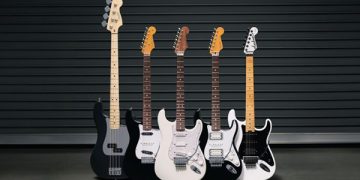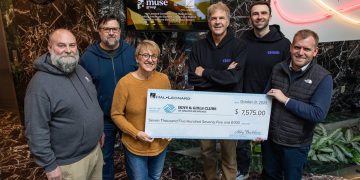 There’s a recording studio in Boston – well, these days it’s in Waltham, which is maybe a half-hour outside of the city – called Wooly Mammoth Sound. I first recorded at Woolly in May of 2002. While I had gone to school for Music Production & Engineering and had interned at a few of the larger studios in the area, that session was one of my first where I, personally, was tracking in a “real” studio and it was everything you’d expect: exciting, intimidating, overwhelming, daunting – and expensive.
There’s a recording studio in Boston – well, these days it’s in Waltham, which is maybe a half-hour outside of the city – called Wooly Mammoth Sound. I first recorded at Woolly in May of 2002. While I had gone to school for Music Production & Engineering and had interned at a few of the larger studios in the area, that session was one of my first where I, personally, was tracking in a “real” studio and it was everything you’d expect: exciting, intimidating, overwhelming, daunting – and expensive.
The studio owner is one David Minehan, whose own band, The Neighborhoods, were (still are, to many) a big deal around these parts when I was quite young. They were regulars at The Rathskellar (“The Rat” – Boston’s version of CBGBs; site of early-career appearances by the likes of The Police, The Cars, U2, Joan Jett & the Blackhearts, Metallica, Dropkick Murphy’s, Bullet LaVolta, and many more) got signed to Atlantic, and toured with the likes of David Bowie, Cheap Trick, and The Ramones. A high-school girlfriend had included a ‘Hoods song on a mix-tape given to me. Point being: to be working with this dude in his fully stacked, pro recording environment back then was pretty heady stuff.
Cue to this past week, 2021.
I’m no longer the fresh-faced (well, less worn-faced, certainly) 20-something I was in ’02 and Woolly Mammoth isn’t located in the Fenway neighborhood of Boston any more, but I was once again setting up gear with Minehan and getting ready to record another few songs.
What struck me was both how much had stayed the same in the past two decades, and how much had changed. While much of the gear – the envy-worthy array of vintage tube amps, 34-track NEOTEK console, microphones from the ‘40s that are worth more than my life – was as if it had been suspended in amber, there’s also a whole lot of new “stuff.” During that first session, billions of years ago (ah, youth…), we mostly recorded to 2” tape, while Minehan minimally employed the then-new-to-him Pro Tools DAW for some elements of mixing. These days, other than printing mixes to analog 1/2” tape, it’s a whole other, digital world. The HDX system with its three AVID (remember Digidesign?) converters did all the heavy lifting, along with a robust Mac Pro Sic Core.
Two decades is, objectively, a pretty sizable stretch of time. In terms of technological advancement, it may as well be millennia. We’ve all experienced buying a flashy new laptop, or flat-screen, or cell phone, only for the purchase to be considered obsolete within weeks of opening the box. As much as certain musicians and some aspects of the MI trade are critiqued – not always unfairly! – for being “stuck in their ways,” musical instruments and gear are also ever-evolving and it behooves anyone active in any aspect of the creation of music to stay at least kind of up to speed.
For my first decade or so at MMR – a trek which also dates back to 2002 – two of the go-to questions when profiling retailers was, “Do you have a website? Do you have an email address?” As recently as 2010, I’d estimate that well over one-third of folks replied in the negative.
As I creak into old-age, I am finding myself – with frightening regularity – having to put effort into remaining on top of technological developments. I may have stifled a laugh or shaken my head in disbelief at those MI dealers who’d reply, “Email? Is that on the World Wide Web?” 15 years ago, but now… I kind of get it.
It’s hard work to adapt and evolve. It’s very tempting to stay in set patterns and believe that what worked five or 10 or 20 years ago could – damnit, will! – work today. But digging in one’s heels won’t impede progress and, time and again, successful MI dealers and suppliers have proven to be pliant and nimble.
In other words: hold on to that Otari analog 2” recorder, for sure – but make sure you’re a whiz at Pro Tools, too.



























Looking Back on 2025: A Year of Controlled Chaos (Emphasis on “Controlled”)